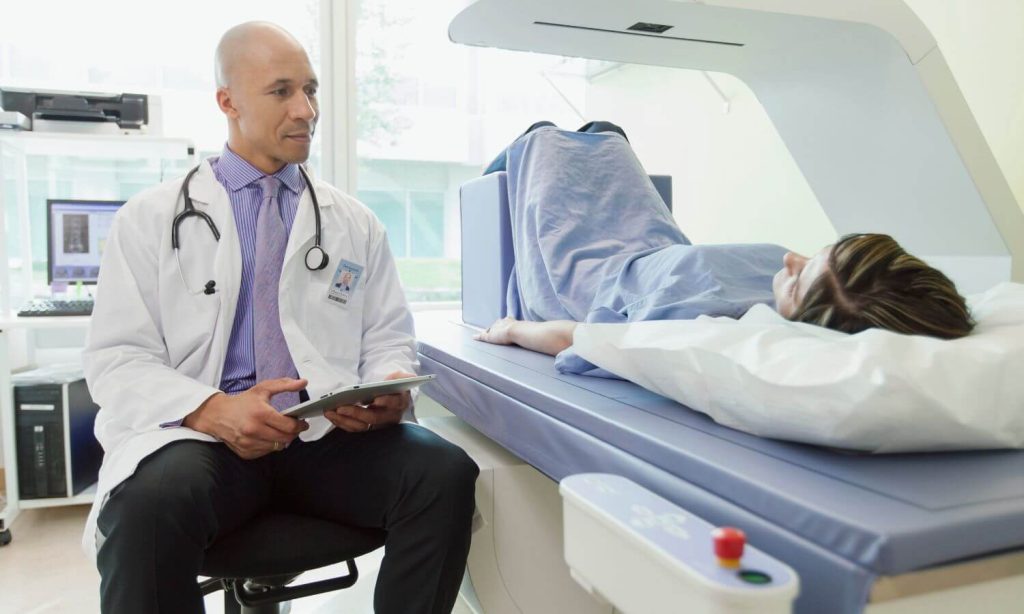Bone health is a critical but often overlooked component of overall well-being. Two key metrics in assessing bone health are Bone Mineral Content (BMC) and Bone Mineral Density (BMD). These measures provide insight into the strength and resilience of our skeletal system, which is foundational for mobility, injury prevention, and long-term health.
What Are BMC and BMD?
- Bone Mineral Content (BMC) refers to the total amount of mineral matter (primarily calcium and phosphorus) in a specific bone or the entire skeleton. It is typically measured in grams and reflects the raw quantity of mineralized tissue.
- Bone Mineral Density (BMD) measures the concentration of these minerals in a given volume of bone, usually expressed in grams per square centimeter (g/cm²). BMD is a key indicator of bone strength and is commonly assessed using a DEXA (Dual-Energy X-ray Absorptiometry) scan. Both metrics are critical for evaluating bone health, as they help identify risks for conditions like osteoporosis, fractures, and frailty, which become more prevalent with age.
Why BMC and BMD Matter for Health
- Preventing Fractures and Osteoporosis
Low BMD is a primary risk factor for osteoporosis, a condition where bones become porous and fragile, increasing the likelihood of fractures. A single fracture, particularly a hip fracture, can lead to a cascade of health issues, including reduced mobility, chronic pain, and even increased mortality risk. By maintaining optimal BMC and BMD, you can significantly reduce the risk of these outcomes, preserving independence and quality of life. - Supporting Mobility and Physical Performance
Strong bones are the foundation of a robust musculoskeletal system. Adequate BMC and BMD ensure that your skeleton can withstand the mechanical stresses of exercise, daily activities, and unexpected impacts. This is especially important for active individuals who want to maintain peak performance over time. - Longevity and Aging
Bone health is a key pillar of healthspan—the period of life spent in good health. Declining BMC and BMD with age can lead to frailty and loss of independence. By prioritizing bone health early, you can mitigate age-related bone loss and maintain functional strength, reducing the risk of falls and injuries that can derail long-term health goals.
Factors Influencing BMC and BMD
Several factors play a role in maintaining or improving BMC and BMD:
Nutrition
- Calcium and Vitamin D: These are the building blocks of bone health. Calcium is essential for bone mineralization, while vitamin D enhances calcium absorption. Adequate intake through diet or supplementation is crucial.
- Protein: Adequate protein intake supports bone remodeling and muscle health, which indirectly supports BMD by reducing fall risk.
- Micronutrients: Magnesium, vitamin K, and other nutrients play supporting roles in bone metabolism.
Exercise
- Resistance training and weight-bearing exercises are critical for stimulating bone growth and maintaining BMD. Activities like weightlifting, running, or even brisk walking apply
mechanical stress to bones, triggering the deposition of new bone tissue. This is particularly important for combating age-related bone loss. - Hormonal Health: Hormones like estrogen and testosterone influence bone density. Hormonal changes—such as those during menopause or andropause—can impact bone health. Monitoring and optimizing hormonal balance through lifestyle or medical interventions can help preserve BMC and BMD.
Lifestyle Factors
- Sleep and Stress Management: Poor sleep and chronic stress can disrupt hormonal pathways that affect bone health.
- Avoiding Smoking and Excessive Alcohol: Both can accelerate bone loss and reduce BMD.
How to Assess and Improve BMC and BMD
- Get a DEXA Scan: DEXA scans are the gold standard for measuring BMD and assessing fracture risk. This
non-invasive test provides a T-score, which compares your BMD to that of a healthy young
adult. Regular scans can help track changes over time and guide interventions. - Strength Training: Incorporate resistance training into your routine at least 2–3 times per week. Focus on
compound movements like squats, deadlifts, and presses, which target multiple muscle
groups and stimulate bone growth. - Optimize Nutrition: Aim for adequate calcium (1,000–1,200 mg/day) and vitamin D (800–2,000 IU/day, depending on blood levels). Work with a healthcare provider to assess your needs and personalize your intake.
- Monitor Health Metrics: Regularly check biomarkers like vitamin D levels, calcium, and hormonal profiles to ensure they support bone health.
Conclusion
Bone health, as measured by BMC and BMD, is a cornerstone of long-term health and longevity. By prioritizing nutrition, exercise, and proactive monitoring, you can build and maintain strong bones that support an active, independent life well into old age. Investing in bone health today is an investment in your future self—ensuring you can move, thrive, and live fully for years to come.

